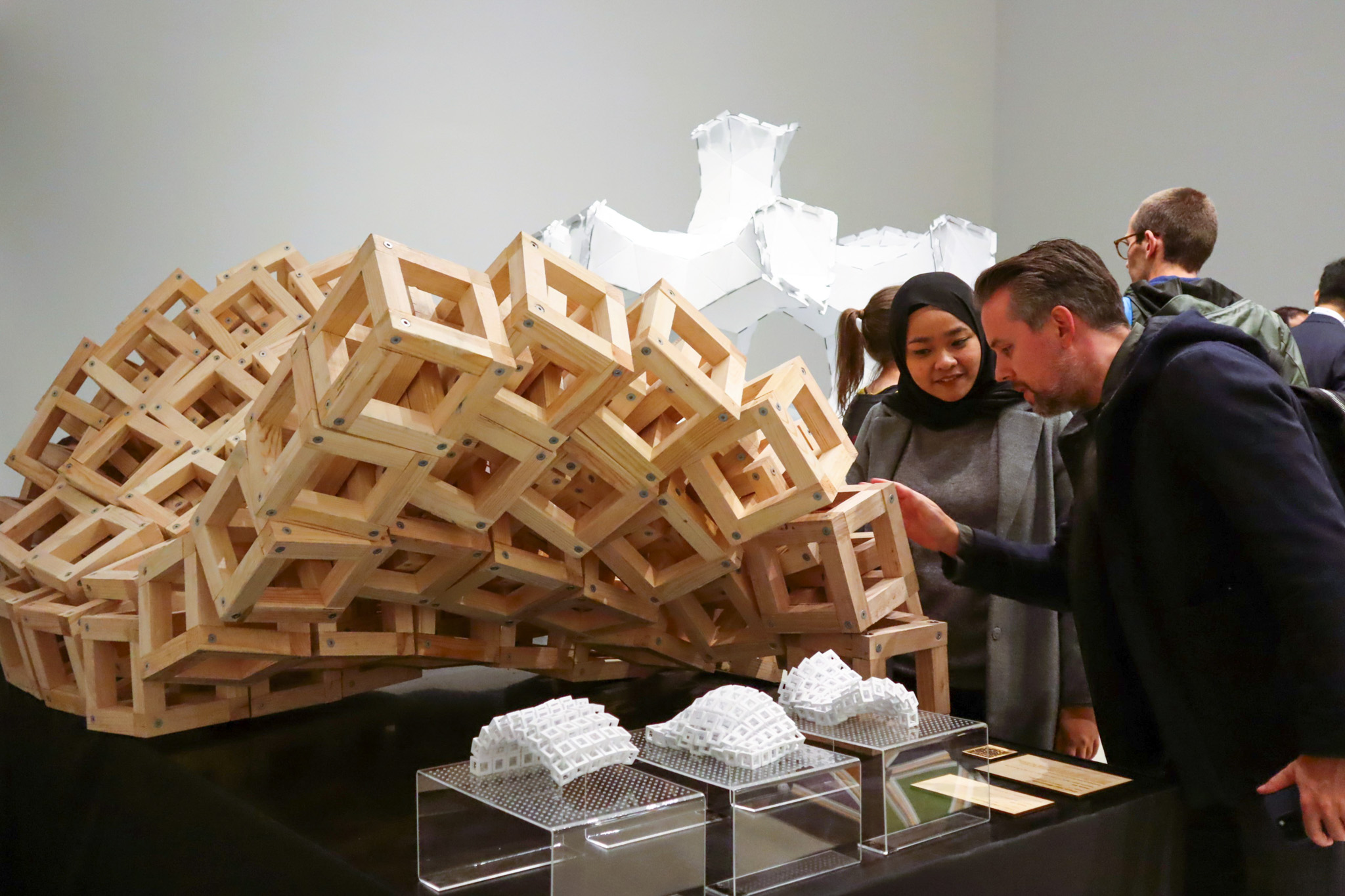Historical armour inspires contemporary architecture

PhD candidate Nabila Afif is applying innovative architecture techniques to the wave, one of the most popular shapes in contemporary architecture.
In summary
PhD candidate Nabila Afif is researching how the structure of chainmail can be used to create adaptive, reconfigurable and transportable architecture
She has built a range of physical prototypes, including a largescale model that was exhibited at the 2023 International Association for Shell and Spatial Structures symposium
Nabila is exploring how to effectively upscale chainmail, envisioning future applications such as reconfigurable shelters and earthquake-resistant structures
Chainmail was once prized for its protection and flexibility, but it fell out of popular use due to how laborious it was to produce. Now, contemporary technologies, such as 3D printing, have brought the accessibility of intricate manufacturing full circle.
Nabila Afif, a PhD candidate and sessional tutor at Swinburne University of Technology and architecture lecturer at Universitas Gadjah Mada in Indonesia, is exploring the opportunity to take this historical material in a surprising and innovative direction.
“3D printing technology has opened up huge possibilities for architects to think about things that we haven't even imagined before,” Nabila said.
“The key features of chainmail are that it is flexible and protective. Those two key words keep popping up as architectural features that we need,” Nabila said.
“We need buildings to be flexible, changing to accommodate peoples’ needs, and we also need them to be safe to inhabit.”

Nabila tested the modular structure with a variety of different thicknesses to balance strength and flexibility.
Mapping a new construction system
Nabila prototyped a range of different geometric variations of chainmail using 3D printed facilities in the Swinburne ProtoLAB.
“The ProtoLAB has been one of the strongest benefits from studying at Swinburne,” Nabila said.
After testing a variety of geometries, Nabila settled on the cube because its symmetry gave the design the most structural control and allowed it to be self-supporting. From there, she built a large-scale prototype to test how the design functioned at an architectural construction scale.
Nabila presented her project and the prototype at the International Association for Shell and Spatial Structures (IASS) 2023 symposium, organised by Swinburne and RMIT.
“Making this large-scale prototype gained a lot of positive attention,” Nabila said.
“People gave me feedback, and I generated a lot of ideas that I hadn’t ever thought of before. There are so many opportunities for collaboration.”
-
 The IASS Symposia attract hundreds of participants each year from around the world
The IASS Symposia attract hundreds of participants each year from around the world -
 The theme of the IASS 2023 symposium was Integration of Design and Fabrication
The theme of the IASS 2023 symposium was Integration of Design and Fabrication -
 Nabila showcased her work to engineers, architects, and researchers from around the world
Nabila showcased her work to engineers, architects, and researchers from around the world -
 A range of leading professionals took interest in the chainmail project, offering feedback and collaboration opportunities
A range of leading professionals took interest in the chainmail project, offering feedback and collaboration opportunities
Paving the way for future innovations
Nabila’s ongoing research aims to harness the core nature of chainmail, with a specific focus on flexibility and self-supporting features.
Through this process, she hopes to create a framework for future architects to develop this material for real-world applications.
"One day, I would love to see my self-standing modular system being used to design things like reconfigurable temporary shelters and earthquake-resistant structures," Nabila said.
Dr Charlie Ranscombe, one of Nabila’s PhD supervisors at Swinburne, has championed the originality and potential of Nabila’s research.
“Although chainmail is an old idea, Nabila’s idea to use it in architecture is completely new,” Dr Ranscombe said.
“That means there are no guidelines or instructions on how to do it. It is precisely that knowledge which Nabila is trying to generate, paving the way forward for others seeking to understand and embrace its use.”

-
Media Enquiries
Related articles
-

- Design
- Student News
How Hao Wei is uniting design and technology to solve problems
Hao Wei Tu enrolled in a study abroad program at Swinburne and is now pursuing a PhD with Swinburne’s School of Design and Architecture and Design Factory Melbourne
Thursday 20 November 2025 -

- Design
How design alum turned passion into a profession
Swinburne design alum Joanna Margiolis is combining her passions of design, photography and sport in her role as a creative specialist at Netball Australia.
Wednesday 03 September 2025 -

- Design
- University
Swinburne alum builds dream career LEGO brick by LEGO brick
Industrial design alum Miller Keys has moved to Denmark to live his childhood dream of being a LEGO designer at the headquarters of the world’s most iconic toy brand.
Tuesday 05 August 2025 -

- Design
- University
Swinburne industrial design alum spreading style
Director, designer and Swinburne alum Lachlan Mackay is making waves in the design industry with his studio Space-man Studio, making the 2025 Australian Design Review’s 30 Under 30 list.
Monday 28 July 2025 -

- University
- Design
Swinburne Design Factory Melbourne appoints new Innovation Fellow and Acting Director
Maureen Thurston, a global leader in innovating, by design, has been appointed as the new Acting Director of Swinburne’s Design Factory Melbourne and an Innovation Fellow.
Monday 03 February 2025

